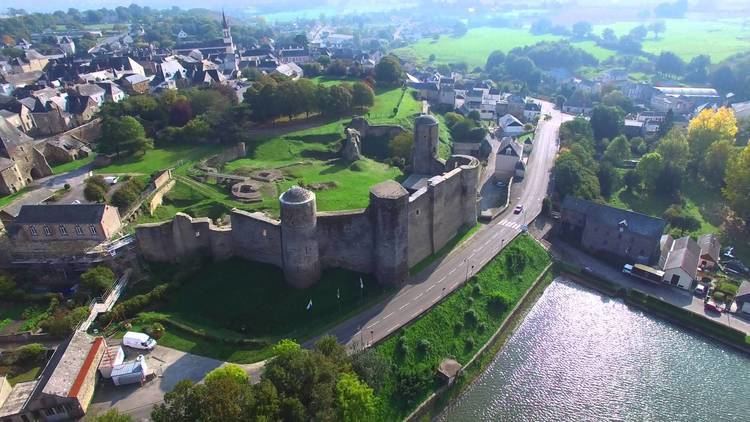Population (2006 estimate) 3,192 Area 48.97 km² Arrondissement Segré | Canton Segré Time zone CET (GMT +1) (UTC+1) Local time Saturday 10:35 AM | |
 | ||
Weather 11°C, Wind NE at 26 km/h, 71% Humidity | ||
Pouancé is a former commune in the Maine-et-Loire department in western France. On 15 December 2016, it was merged into the new commune Ombrée d'Anjou. It is located on the border of 4 French departements: the Maine-et-Loire, the Mayenne in the North, the Ille-et-Vilaine in the North-west, and the Loire-Atlantique in the West.
Contents
Map of 49420 Pouanc%C3%A9, France
During the Middle-ages, Pouancé was at the border between Anjou, part of the Kingdom of France, and the independent duchy of Brittany. The city gained the nickname of "Door of Anjou, March of Brittany". Until now, the city keeps its partially preserved city walls, some of its city gates and its medieval castle, the second largest in Anjou.
History
The menhir of Pierrefrite is one of the only remains from the prehistory in Pouancé region, along with some stone axes and an arrowhead. The menhir is located on the border of the commune of Armaillé et Saint-Michel-et-Chanveaux. The menhir is made of red slate and is 5 meters tall.
After the discover of pieces of tegulae in a wood, it is supposed that a Roman kiln did exist, and along with it, a Gallo-Roman habitat.
The earlier place of settlement on the territory is supposed to be the village of Saint-Aubin, about one kilometre far from the center of Pouancé. In the walls of Saint-Aubin church (12th century) was found the remains of a Merovingian sarcophagus.
The first known lord of Pouancé was Manguinoë, from 990 to 1037. It is supposed that he built the first castle, in a motte-and-bailey style. For defensive reasons, the motte was built one kilometre from Saint-Aubin, on a slate hill. At the end of the 12th century, a medieval village grew up around, the first towers were built, and the village was fortified. The fortress complete, it counted 15 towers and 3 defensive walls.
During the reign of Charles V of France, a permanent tax, the gabelle, was established on the salt. The Anjou became a Pays de grandes gabelles, where tax was heaviest. Because Brittany was exempted of this tax, an important smuggle developed in the border of Anjou and Brittany. In 1343, a greniers à sel (salt granary) was established in Pouancé to store the salt and judge dispute on the tax. The smuggling was so important in Pouancé that a special jail for the faux-sauniers (name for the salt smugglers) was built.
During the Hundred Years' War, Pouancé has been besieged twice: the first time in 1432 by John VI, Duke of Brittany, allied with English and Scottish troops. The second time in 1443, by John Beaufort, 1st Duke of Somerset. But the city managed to resist every time, and the besiegers were forced to retreat.
During the 16th century, Pouancé was also famous in Anjou for its forges. The French royal navy command commission the forge for several thousand of round shots.
After the French revolution, Pouancé became the chef-lieu of a canton. The canton of Pouancé groups together 14 communes.
Toponymy
The etymology of Pouancé could come from the latin name, Potentius, derived from the latin potens (powerful). Others make its derived from the Celtic pouleum (a hill, or a butte). First mention of Pouancé dated from 1050, when the town is named Poenciacum and Pautiacum. As time goes by, Pouancé born the following name:
Geology and hydrology
The river Semnon forms part of the commune's northern border along with the Araize.
The river Verzée flows southeastward through the southern part of the commune and crosses the town. It forms the lake of Saint-Aubin, then the lake of Pouancé just under the castle, and finally the lake of Tressé.
